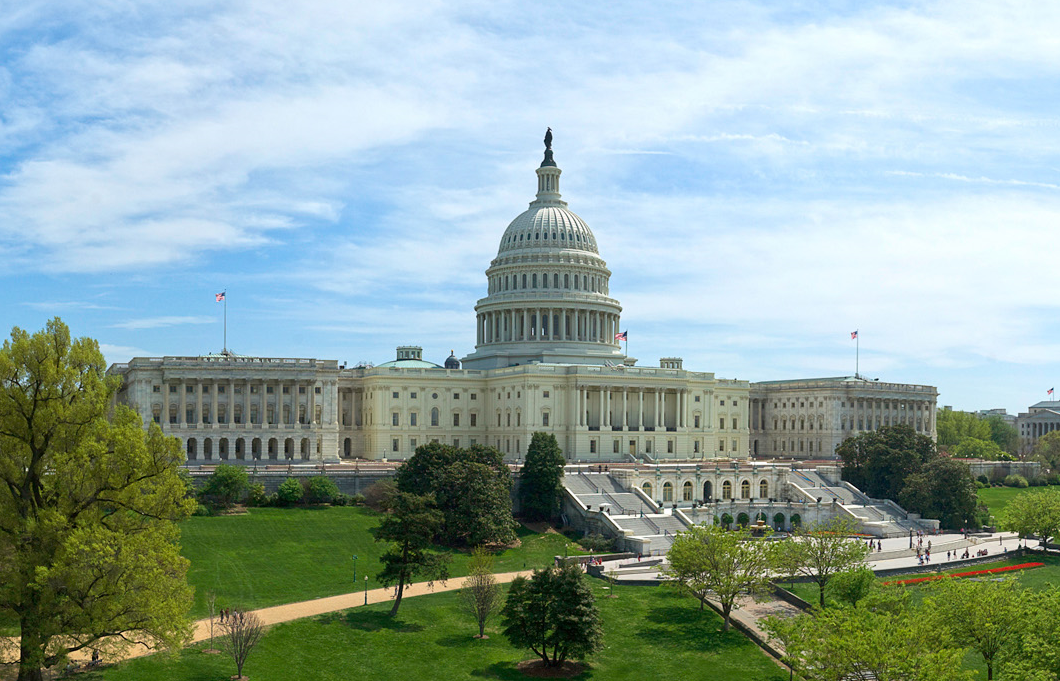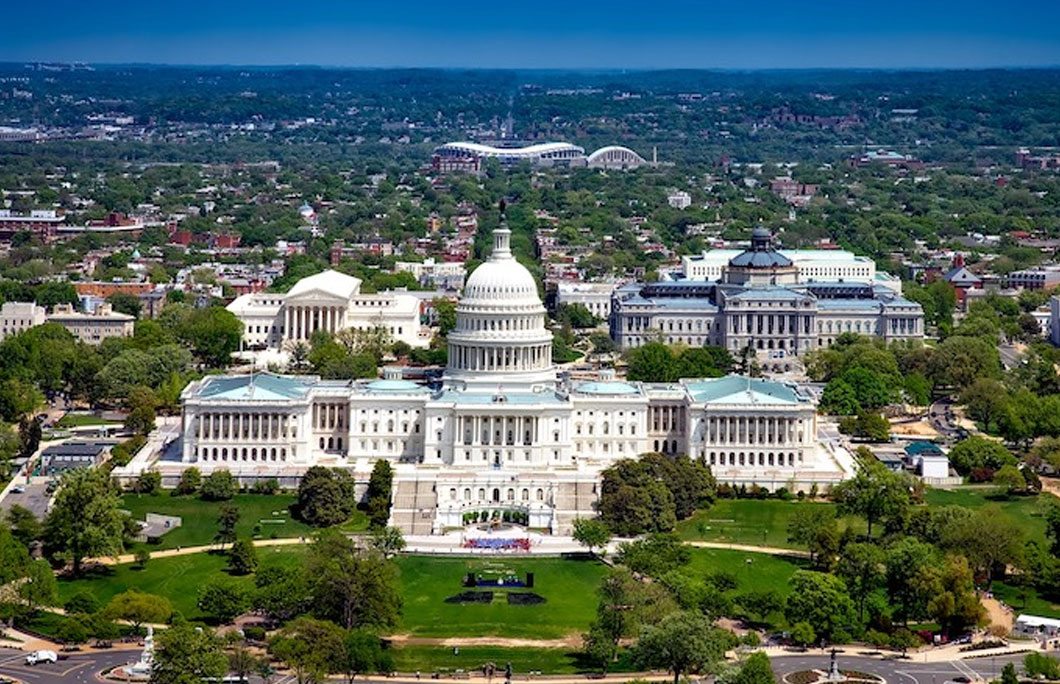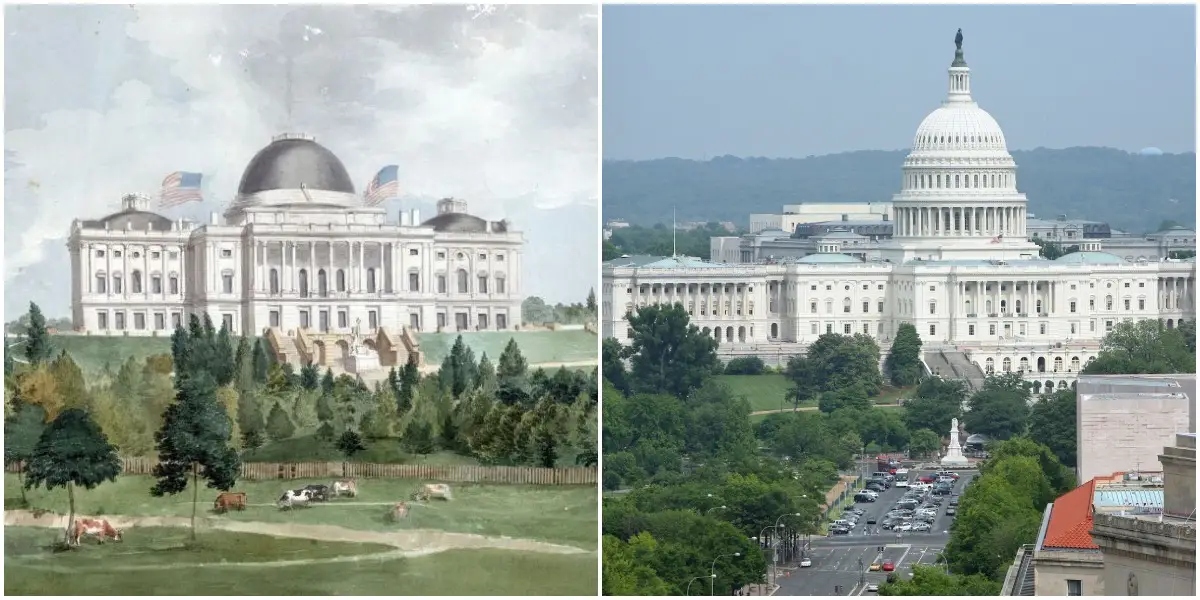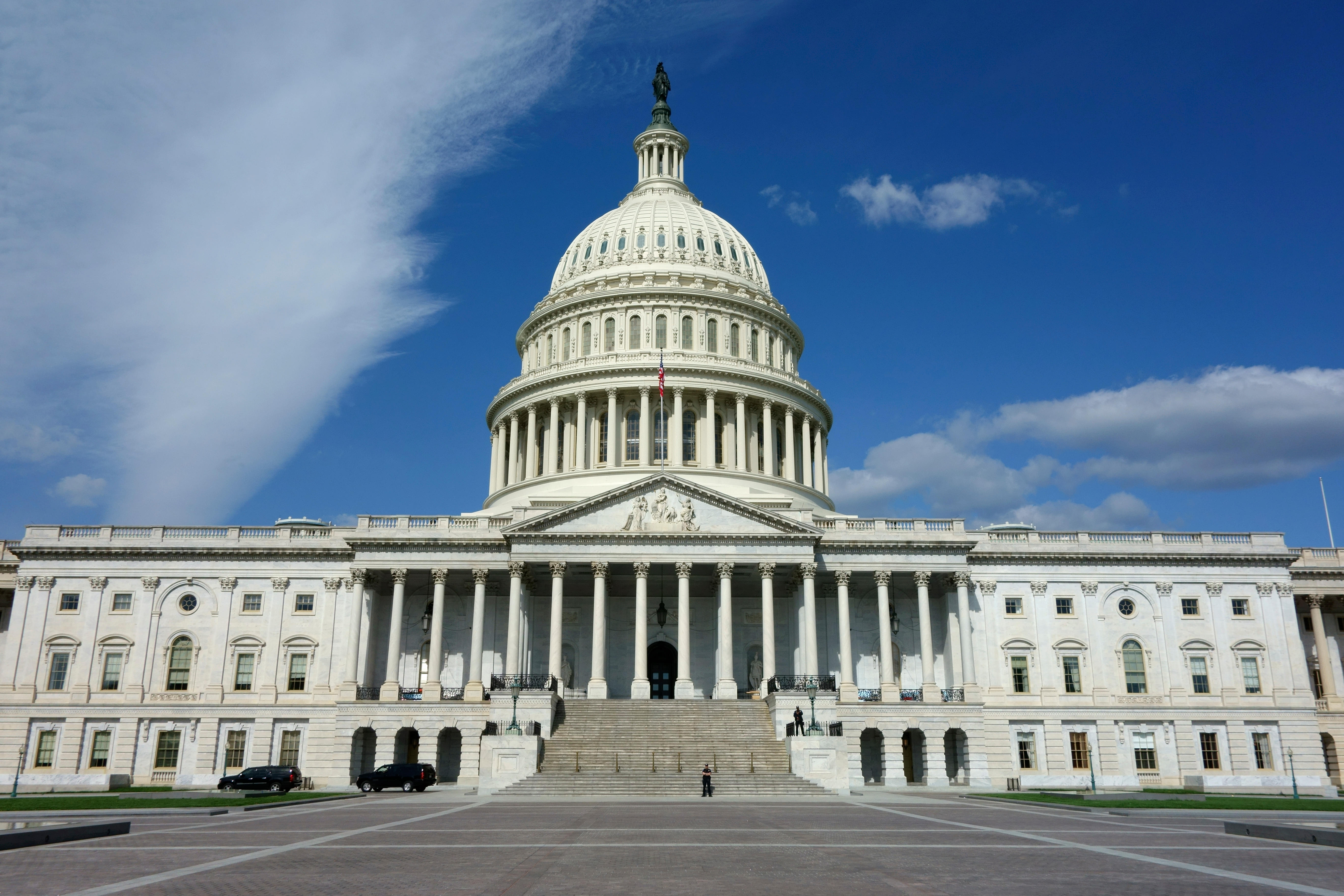Preservation Expansion Capitol Hill - Harmonizing History And Development
Capitol Hill, located in Washington, D.C., is not only home to the United States Capitol but also holds historical and cultural significance. Over the years, Capitol Hill has experienced a unique path characterized by both preservation efforts to maintain its historic charm and expansion initiatives to accommodate the evolving needs of the government and the community. This article explores the preservation expansion Capitol Hill journey, from its preservation as a historic district to the expansions that have shaped its landscape.
Author:George EvansJul 19, 202327.7K Shares895.6K Views

Capitol Hill, located in Washington, D.C., is not only home to the United States Capitol but also holds historical and cultural significance.
Over the years, Capitol Hill has experienced a unique path characterized by both preservation efforts to maintain its historic charm and expansion initiatives to accommodate the evolving needs of the government and the community.
This article explores the preservation expansion Capitol Hilljourney, from its preservation as a historic district to the expansions that have shaped its landscape.
Capitol Hill, one of the city's oldest and most architecturally diverse neighborhoods, represents the social diversity and economic prosperity of the early capital.
The first Capitol Hill neighborhood was a tiny group of houses mostly inhabited by government employees. With DC being the new federal government's seat, many Congressmen found themselves needing to get to work but hesitant to settle in the capital city.
Many chose to remain at boarding rooms near the Capitol instead, and by 1801, the majority of Congressmen lived on Capitol Hill. Within a few decades, almost 2,000 people were living on the Hill and constructing homes in the expanding neighborhood.
Capitol Hill, with its 19th-century rowhouses and market, as well as a thriving nightlife and dining scene, is one of the city's most popular neighborhoods. Let's have a detailed look at its preservation and development.
Preservation Of Historic Charm
Capitol Hill, located in Washington, D.C., is renowned for its well-preserved historic charm. The neighborhood is characterized by its iconic rowhouses, many of which date back to the 19th century.
These rowhouses showcase diverse architectural styles, including Federal, Victorian, and Italianate, contributing to the unique character of Capitol Hill. Efforts to preserve the architectural integrity and cultural heritage of the neighborhood led to the establishment of the Capitol Hill Historic District in 1976.
The Capitol Hill Historic District plays a vital role in ensuring the preservation of the neighborhood's historic charm. The district encompasses a significant portion of Capitol Hill, including residential areas and commercial corridors.
It establishes guidelines and regulations to maintain the facades, streetscapes, and overall ambiance of the neighborhood. These measures aim to protect the architectural heritage, historic landmarks, and cohesive streetscapes that define Capitol Hill.
Through preservation efforts, Capitol Hill has retained its distinctive ambiance and served as a visual link to its past. The preservation of the neighborhood's architectural treasures not only contributes to its aesthetic appeal but also fosters a sense of historical continuity and community pride.
Visitors and residents alike can appreciate the beauty and authenticity of Capitol Hill's historic charm as they stroll through its streets and admire its well-preserved rowhouses.
Growth Of The Capitol Complex
While Capitol Hill is steeped in history, it has also experienced significant growth and expansion to accommodate the evolving needs of the federal government. The United States Capitol, the focal point of the neighborhood, has undergone various phases of expansion and renovation throughout its history.
One notable expansion of the Capitol Complex took place in the mid-19th century with the addition of the House and Senate wings. These expansions provided much-needed space to accommodate the growing number of legislators and staff. The House and Senate wings mirror the architectural style of the original Capitol building, seamlessly integrating into the historical fabric of Capitol Hill.
In recent years, the Capitol Complex witnessed another significant expansion with the construction of the Capitol Visitor Center. Completed in 2008, the Visitor Center serves as an underground facility that provides enhanced visitor amenities, including exhibition spaces, orientation theaters, and educational resources.
The Visitor Center not only improves the visitor experience but also addresses security concerns and facilitates the smooth functioning of the Capitol as a working legislative building.
These expansions within the Capitol Complex reflect the continuous growth and adaptation of the federal government. They ensure that the United States Capitol remains a functional space that can accommodate the evolving demands of legislative activities, congressional staff, and the increasing number of visitors who come to witness the democratic process in action.
Residential Development
- Housing Diversity -Residential development in Capitol Hill aims to provide a diverse range of housing options to meet the needs of various residents. The neighborhood features a mix of historic townhouses, row houses, apartment complexes, and modern condominiums. This diversity creates a vibrant community with a blend of architectural styles, catering to individuals and families with different preferences and lifestyles.
- Preservation of Historic Structures -While new residential developments emerge, efforts are made to preserve and incorporate existing historic structures into the fabric of the neighborhood. Adaptive reuseprojects transform historic buildings into residential spaces, preserving their architectural charm and contributing to the preservation of Capitol Hill's identity.
- Architectural Guidelines - Architectural guidelines ensure that new residential developments within Capitol Hill harmonize with the neighborhood's existing character. Design standards may encompass architectural styles, building heights, setbacks, and materials, ensuring that new construction blends seamlessly with the historic fabric of the area. These guidelines help to preserve the neighborhood's unique architectural heritage while accommodating contemporary residential needs.
- Affordable Housing -Promoting affordable housing options is an essential component of residential development in Capitol Hill. Inclusionary zoning policies, tax incentives, and partnerships with developers encourage the creation of affordable housing units within new residential projects. This fosters socio-economic diversity and enables a wide range of individuals and families to live in the neighborhood.
Community Engagement Initiatives In Capitol Hill
Capitol Hill has experienced revitalization initiatives aimed at enhancing the quality of life for its residents and preserving its cultural heritage. These efforts involve active community engagement and participation, as residents, local organizations, and businesses collaborate to improve public spaces, promote sustainability, and strengthen community bonds.
- Public Spaces and Parks -Revitalization efforts in Capitol Hill focus on creating attractive public spaces and parks that serve as gathering spots for residents and visitors. Enhancing green spaces, creating pocket parks, and improving access to recreational areas contribute to the overall livability and well-being of the community. These spaces provide opportunities for social interaction, community events, and leisure activities.
- Retail and Commercial Spaces -Revitalization efforts also emphasize the development of vibrant retail and commercial areas within Capitol Hill. The addition of shops, restaurants, cafes, and local businesses not only adds to the neighborhood's vibrancy but also creates employment opportunities and fosters economic growth. Encouraging small businesses and promoting local entrepreneurship contributes to a sense of community and enhances the neighborhood's overall appeal.
- Community Facilities and Services -Investment in community facilities and services is a vital aspect of revitalization. This includes the development of community centers, libraries, schools, healthcare facilities, and other amenities that cater to the needs of residents. These facilities serve as gathering places, promote social cohesion, and enhance the quality of life for Capitol Hill residents.
- Preservation of Cultural Heritage -Community engagement plays a crucial role in preserving and celebrating Capitol Hill's cultural heritage. Collaborative efforts between residents, community organizations, and local authorities ensure that historical sites, traditions, and events are recognized and preserved. This involvement fosters a sense of pride and ownership among residents and strengthens the neighborhood's identity.
- Neighborhood Associations and Civic Engagement - Neighborhood associations and civic engagement initiatives provide avenues for residents to actively participate in shaping the future of Capitol Hill. These organizations organize community events, advocate for residents' interests, and facilitate communication between residents, local authorities, and developers. By actively engaging residents in decision-making processes, a sense of community and shared responsibility is fostered.
Balancing Preservation And Growth
Capitol Hill, with its historical significance and iconic landmarks, stands as a symbol of American democracy. As the heart of the nation's political landscape, the area faces the challenge of balancing preservation and growth. Striking a delicate equilibrium between honoring its rich heritage and accommodating modern needs is crucial to maintaining Capitol Hill's unique character while embracing progress.
- Historical Preservation -Preserving Capitol Hill's historical significance is a fundamental priority. The area is home to the United States Capitol, the Supreme Court, and the Library of Congress, among other notable landmarks. Architectural conservation, adaptive reuse of historical buildings, and restoration efforts are central to safeguarding the neighborhood's authentic charm. Collaborations between government agencies, historical preservation boards, and architectural experts are essential in adhering to preservation guidelines while ensuring that the buildings' structural integrity is maintained.
- Heritage Conservation- Capitol Hill's heritage encompasses more than just its buildings. The neighborhood's cultural legacy, traditions, and events play an integral role in shaping its identity. Balancing preservation and growth involves recognizing and celebrating this intangible heritage through community engagement and civic initiatives. Preserving cultural events, historical sites, and traditions fosters a sense of belonging among residents and visitors alike.
- Smart Growth and Development - While preserving its heritage, Capitol Hill must embrace smart growth and development to accommodate the evolving needs of the nation. Strategic urban planning, sustainability, and land use policies play a significant role in managing growth responsibly. Focusing on transit-oriented development, mixed-use spaces, and pedestrian-friendly designs can enhance the neighborhood's livability while minimizing the impact on its historic fabric.
- Preservation of Public Spaces -Balancing preservation and growth involves preserving and enhancing the public spaces that define Capitol Hill. Parks, squares, and green spaces contribute to the neighborhood's quality of life, providing areas for relaxation, recreation, and social interaction. Thoughtful design and responsible maintenance are crucial in ensuring that these public spaces continue to serve as focal points for residents and visitors alike.
- Infrastructure Upgrades - As the neighborhood experiences growth, upgrading its infrastructure becomes imperative. Improving transportation networks, utilities, and communication systems are essential to support the increased demand on the Capitol Complex. Implementing sustainable practices and investing in smart technologies can minimize disruption while modernizing essential infrastructure.
- Inclusive and Accessible Development - Ensuring that growth is inclusive and accessible to all residents is essential for a thriving community. Affordable housing initiatives, mixed-income developments, and the incorporation of universal designprinciples contribute to a more equitable neighborhood. Promoting economic diversity and social inclusion enhances the neighborhood's vibrancy and fosters a sense of community.
- Public-Private Partnerships - To effectively balance preservation and growth, public-private partnerships are instrumental. Collaborative efforts between government entities, developers, community organizations, and residents allow for comprehensive planning that addresses both heritage preservation and modernization needs. These partnerships promote transparent decision-making and enable a holistic approach to development.
- Adaptive Land Use - Adapting land use to suit changing needs while respecting the historical context is a key aspect of balancing preservation and growth. Careful consideration of the neighborhood's zoning, building regulations, and architectural guidelines is necessary to harmonize new developments with the existing fabric. Striking a balance between commercial, residential, and institutional spaces ensures a diverse and vibrant community.
People Also Ask
What Is The Capitol Hill Historic District?
The Capitol Hill Historic District is a designated area in Washington, D.C., encompassing the historic neighborhood of Capitol Hill. Established in 1976, it aims to preserve the architectural integrity and cultural heritage of the area, ensuring the preservation of its historic charm.
How Has Capitol Hill Expanded Over The Years?
Capitol Hill has undergone expansions to accommodate the needs of the federal government. Notable expansions include the addition of the House and Senate wings to the United States Capitol and the construction of the Capitol Visitor Center. These expansions provide increased space for legislative activities, improved visitor accessibility, and enhanced security measures.
What Architectural Styles Are Found In Capitol Hill?
Capitol Hill showcases a variety of architectural styles, including Federal, Victorian, and Italianate. The neighborhood is renowned for its well-preserved rowhouses, many of which date back to the 19th century, contributing to the historic charm and diverse architectural heritage of Capitol Hill.
How Does Capitol Hill Balance Preservation And Development?
Capitol Hill strikes a balance between preservation and development through thoughtful urban planning and community engagement. Preservation efforts focus on maintaining the architectural integrity and character of the neighborhood, while development initiatives address the evolving needs for housing, public spaces, and community amenities.
What Are Some Community Engagement Initiatives In Capitol Hill?
Capitol Hill features various community engagement initiatives aimed at revitalizing the neighborhood and preserving its cultural heritage. Examples include neighborhood clean-up events, community gardens, local markets, and festivals. These initiatives foster a sense of community, improve public spaces, and promote sustainability in the neighborhood.
Conclusion
The preservation expansion Capitol Hill showcases a harmonious blend of historical preservation, growth, and community engagement. The neighborhood's commitment to preserving its architectural heritage, coupled with strategic expansions to accommodate the evolving needs of the government and the community, has shaped Capitol Hill into a vibrant and thriving district.
As Capitol Hill continues to evolve, it remains a symbol of American democracy, while preserving its unique character and serving as a testament to the importance of balancing preservation and growth in urban development.

George Evans
Author
George Anderson, an exceptional architectural designer, envisions and brings to life structures that transcend the realm of imagination. With an unwavering passion for design and an innate eye for detail, George seamlessly blends form and function, creating immersive spaces that inspire awe.
Driven by a deep appreciation for the interplay of space, light, and materials, George's innovative approach redefines the possibilities of architectural design. His visionary compositions leave an indelible mark, evoking a sense of wonder and transforming the built environment.
George Anderson's transformative designs and unwavering dedication continue to shape the architectural landscape, pushing the boundaries of what is possible and inspiring generations to come.
Latest Articles
Popular Articles


